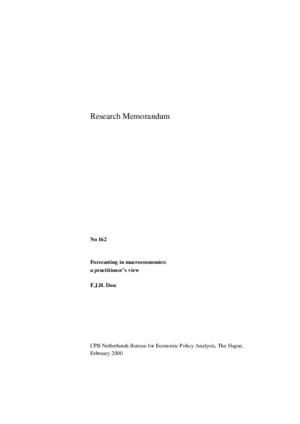February 1, 2000
Forecasting in macroeconomics: a practioner's view
Forecasts are made in order to help decision making. As loss functions are usually unknown, and certainty equivalence is unlikely to prevail, a forecaster must communicate not just his forecast but also enable the client to form his opinion on the associated uncertainty.
Communicating statistical properties tends to be very difficult, because of implicit or explicit conditioning on other variables, on model parameters or specification, and sometimes on subjective probability assessments.
Three non-statistical criteria for forecast quality are put forward: logical coherence, economic coherence, and stability. Against this background, alternative forecasting techniques are discussed. For communication with the client, uncertainty variants and alternative scenarios appear adequate. Still policy makers have a strong tendency to choose a single scenario and use it on the assumption of certainty equivalence, rather than use different scenarios as a test on the robustness and flexibility of policy choices.
Downloads
English, Pdf, 172.9 KB
Authors
Henk Don
